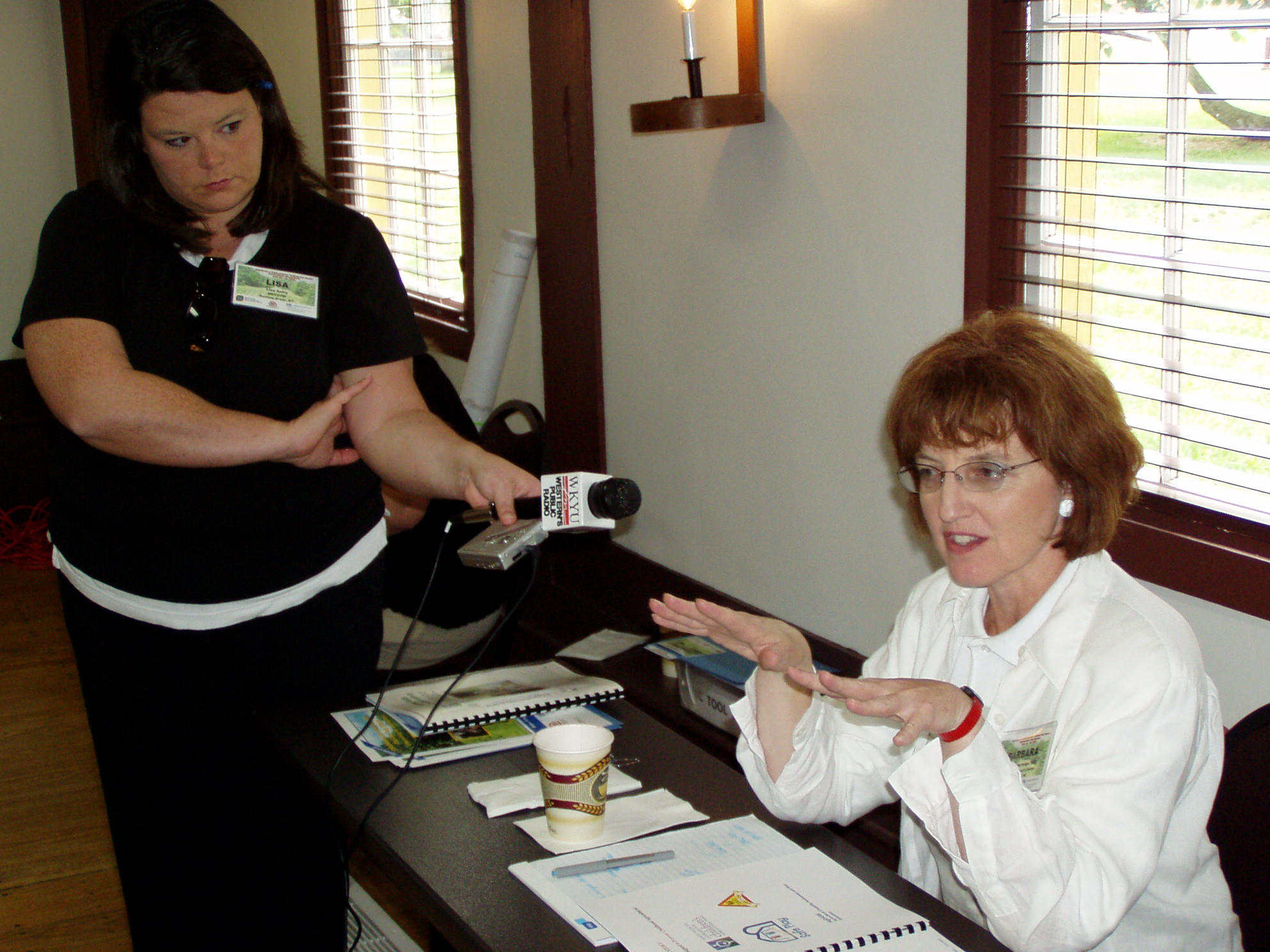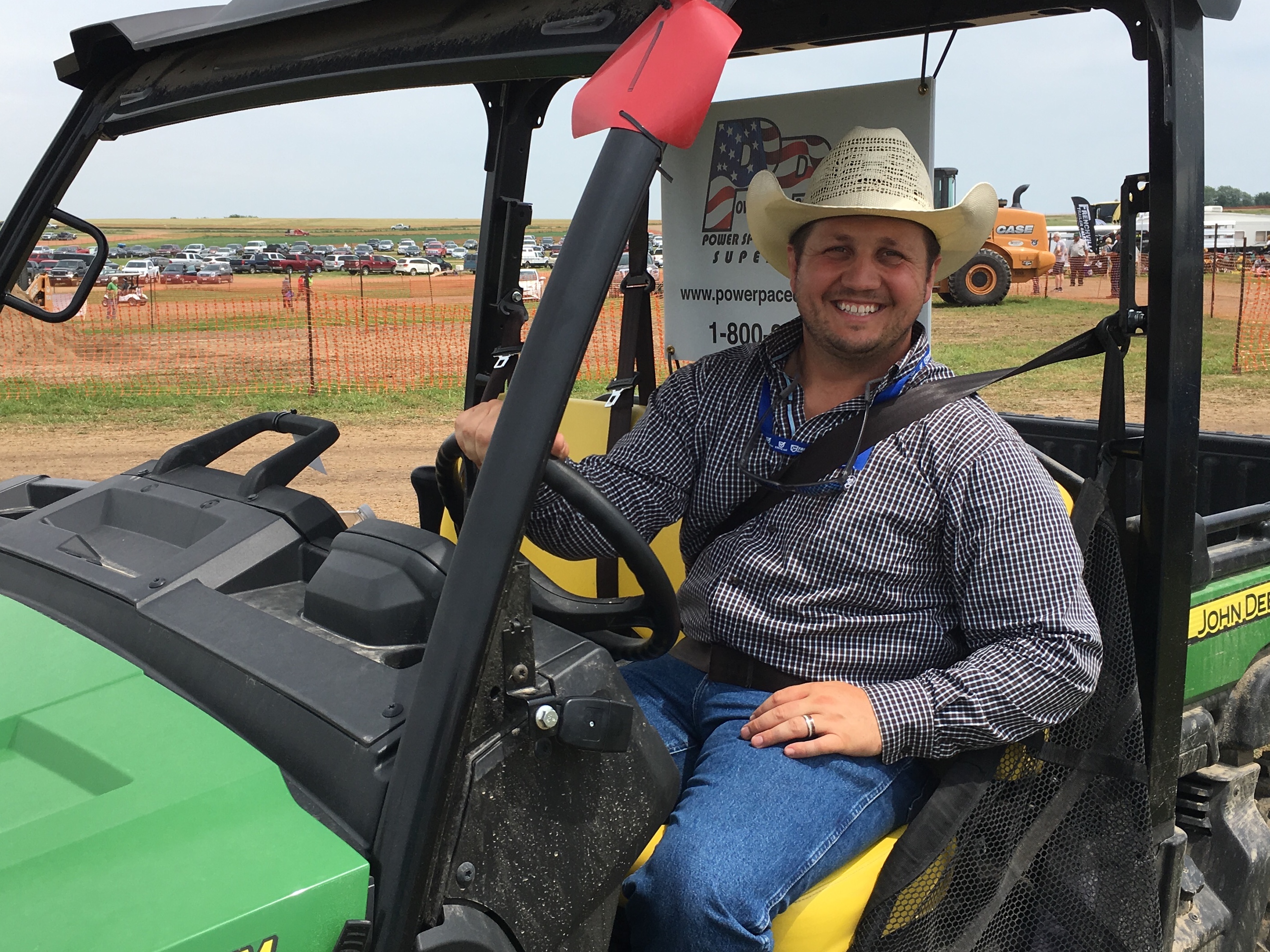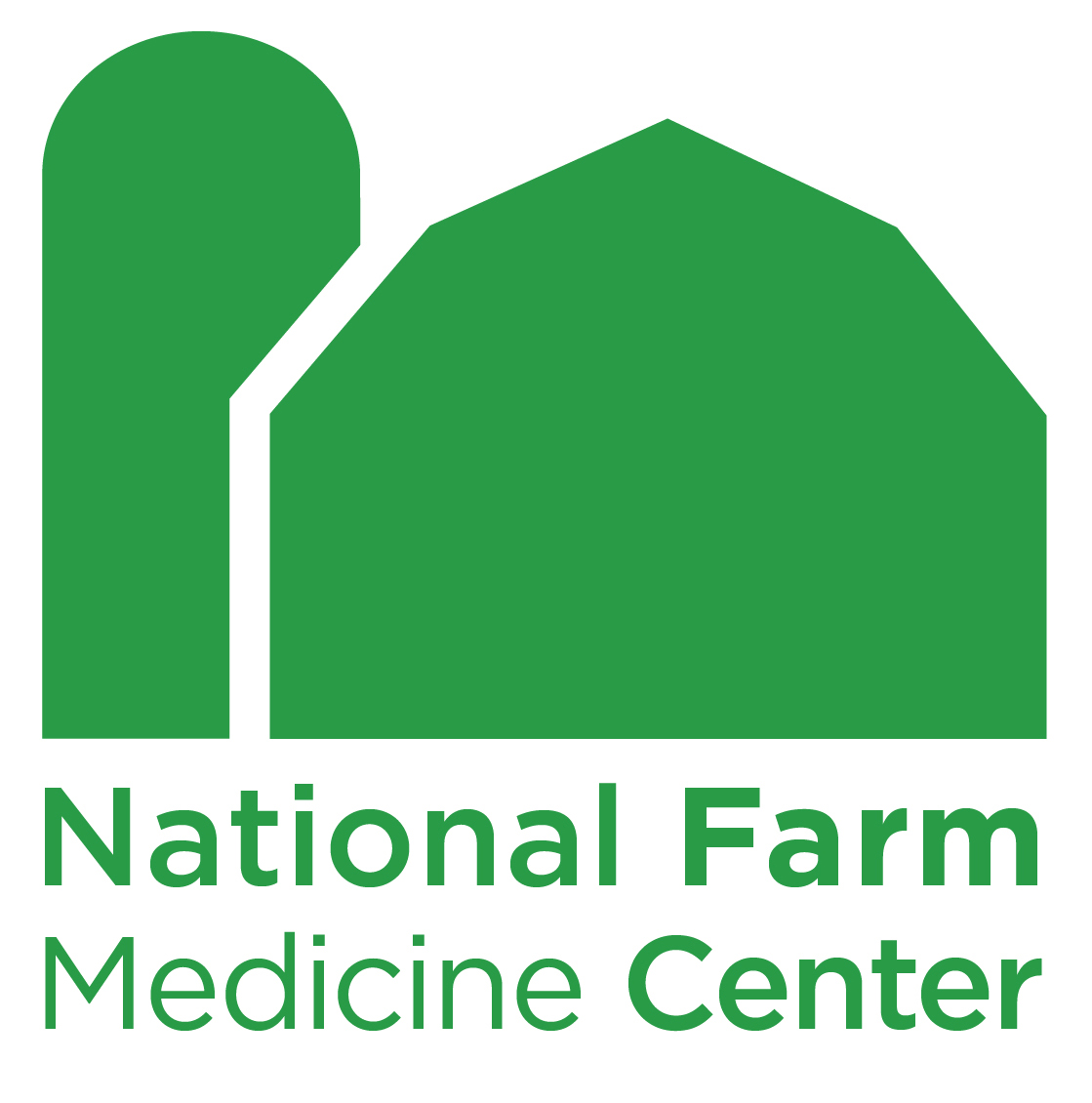 National Farm Medicine Center turns 40
National Farm Medicine Center turns 40
Marshfield center dedicated to health and happiness of farm owners, families and workers
Farms and ranches can be hazardous, characterized by diversity in commodities, people and size, not to mention the often-blurred line between home and work site. No two operations are alike, requiring researchers and safety professionals to address myriad work environments in an ever-evolving industry.
But there has been a constant in this field for 40 years: the National Farm Medicine Center at Marshfield Clinic Research Institute.
The center, known throughout the Marshfield Clinic system as “Farm Medicine,” officially took root in central Wisconsin in 1981, built upon world-renowned research into respiratory illnesses during the 1960s and 1970s led by Dean Emanuel, M.D., a cardiologist who was part research detective, part country doctor.
“Prestigious yet disarming,” is how farmer Ralph Bredl described the late Dr. Emanuel. “As a young Auburndale farm boy I have vivid memories of following my father, soon to be diagnosed with Farmer’s Lung disease, and Dr. Emanuel as they walked the farm and discussed what might be causing my father's recurring ailment. At that moment, this farm boy had no idea he was seeing the foundations of the National Farm Medicine Center being built.”
Respiratory illness and other issues unique to farming led physicians and staff of Marshfield Clinic to establish the National Farm Medicine Center, making “a very bold declaration that we’re going to be really good at this,” said Casper Bendixsen, Ph.D., research scientist and director of the National Farm Medicine Center since 2019.
Bendixsen credits the ongoing success of the center to four ingredients: Time, space, community and people.
“The time dedicated to medicine and agriculture really goes back to the foundations of the Clinic,” Bendixsen said. Providing “high-quality health care to a rural environment fits first and foremost the mission of what Marshfield Clinic should be.”
Second, he said, “We’re in the right place for something like this to exist,” in a rural community. While other agriculture health and safety centers are housed in universities and rely on outside funding to merit their existence, the NFMC exists as a department with a mission and Clinic support.
Next is the heart of the community, Bendixsen said. “The community believes in having this. That’s very much apparent in the donor support. They support us when the grants don’t come in” or when projects will benefit the community, such as installing rollover protective structures (or ROPS) on tractors or conducting skin cancer screenings. The center’s major annual fundraiser, the Auction of Champions, has raised more than $4 million since its inception in 1982.
Last, but not least, are the people who do the research, Bendixsen said. “Really bright minds have passed through the center,” he said, including staff and administrative employees who do great work.
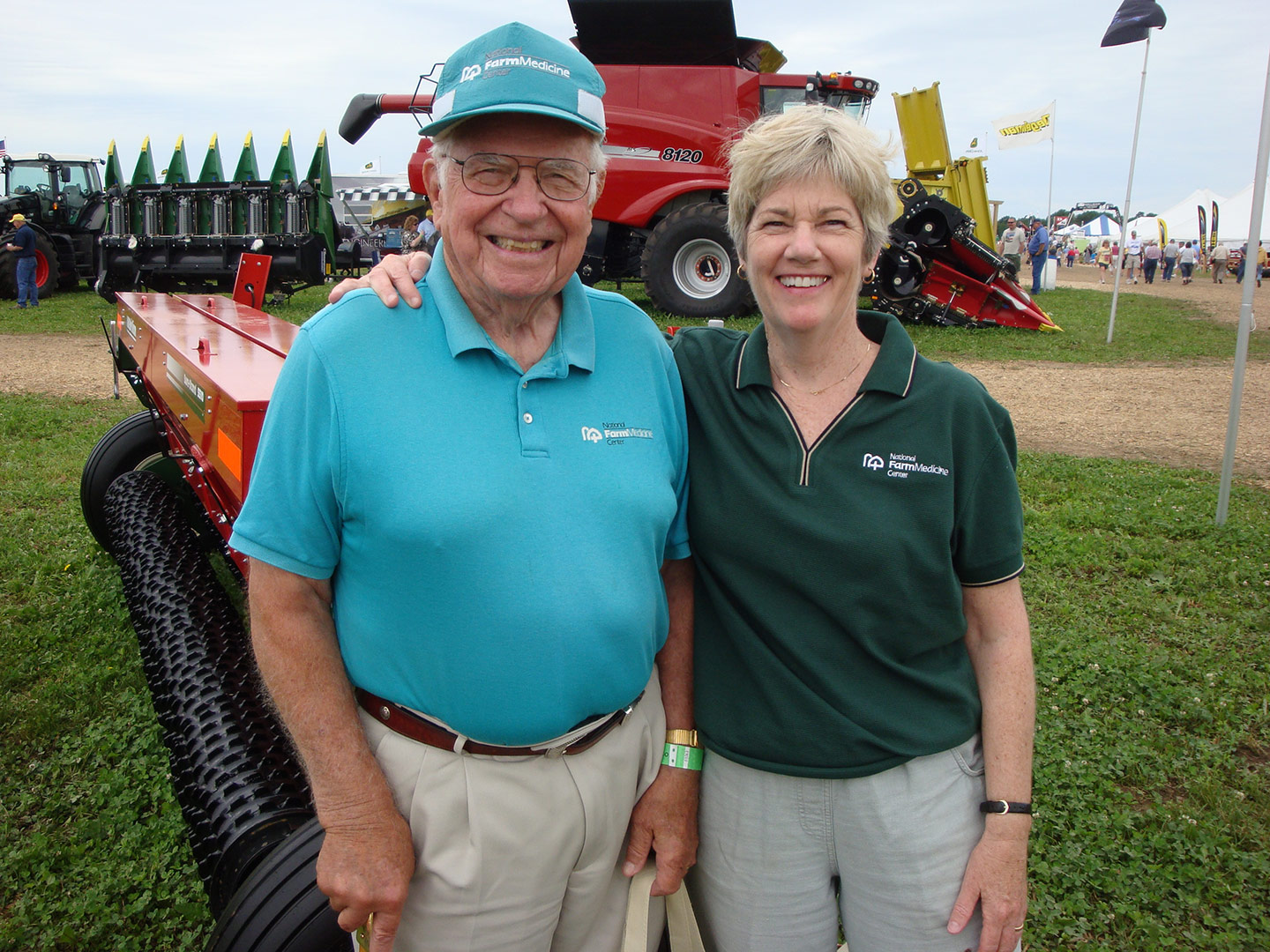
Dean Emanuel, MD., and Barbara Lee, Ph.D.
At 2011 Wisconsin Farm Technology Days. Dr. Emanuel, who passed away in 2016 at the age of 92, was one of the founders of Marshfield Medical Research Foundation (Marshfield Clinic Research Institute) and the founding director of the National Farm Medicine Center. Dr. Lee became the first full-time employee of Farm Medicine in 1987 and in 1997 led establishment of the National Children’s Center for Rural and Agricultural Health and Safety, which she directs today.
People at the heart of the center
Barbara Lee, Ph.D., director of the National Children’s Center for Rural and Agricultural Health and Safety and former director of the National Farm Medicine Center, is one of those people. “I started back in 1987 when I switched from a hospital nursing career to the National Farm Medicine Center, and I was actually the first full-time employee of the National Farm Medicine Center,” Lee said. “That was the beginning of my work in farm safety.”
Lee said she transitioned quickly into wanting to protect children from agricultural hazards and promoting health and well-being in agriculture. She had been on the job about two months when parents from the nearby town of Thorp asked her how they could safeguard their small children on the farm. New to the job, she was surprised by the question and offered to help. It became clear there was a lack of childhood agricultural safety information.
“In 1990, there wasn’t anything out there. No guidelines or safety resources or child farm safety specialists,” she said.
Lee planned, organized and held the first national symposium on children’s farm safety in 1992 because she wanted to learn more. With a Kellogg Foundation grant, 120 invitees spent three days in Marshfield, discussing children, farms and safety. Those experts visited local farms for dinner and listened to parents. That led to the first published report and ultimately a national action plan, endorsed by the U.S. Congress, with recommendations to protect children on farms. It became the National Childhood Agricultural Injury Prevention Initiative, implemented in 1996 by the National Institute for Occupational Safety and Health (NIOSH).
In 1997, the National Farm Medicine Center became home to the National Children’s Center for Rural and Agricultural Health and Safety, one of 11 agricultural centers funded by NIOSH, Centers for Disease Control and Prevention.
“(The National) Children’s Center in Marshfield is the largest center in the world that has a dedicated staff looking at protecting children on farms,” said Lee, who has been director of the National Children’s Center since its inception.
Lee was recognized in 2021 for her work in agricultural safety with the Lifetime Achievement Award at the North American Agricultural Safety Summit, hosted by the Agricultural Safety and Health Council of America. Lee served as ASHCA’s first executive director in addition to helping secure funding and support for its incorporation in 2007.
Barbara is a visionary, a pathfinder and a supporting friend,” said Dan Hair, recently retired senior vice president and chief risk officer at WCF Insurance, Salt Lake City, Utah, in recognizing Lee. “Her contributions to agricultural safety and health make her worthy of all the thanks and recognition we can give.”
The focus on children in agricultural work environments by Lee and deputy Children’s Center director Barbara Marlenga, Ph.D., who retired in 2019, set the Marshfield center apart, Bendixsen said. Marlenga’s projects included development and evaluation of the North American Guidelines for Children’s Agricultural Tasks. She also participated in groundbreaking research confirming that “supervision” is not a sufficient protective strategy for children on farms. Together, Lee and Marlenga addressed child agricultural safety issues that no one had ever grappled with.
The Children’s Center is a cornerstone of the National Farm Medicine Center, and “early on, it becomes a really critical piece of what we do,” Bendixsen said.
Barbara Marlenga, Ph.D.
Deputy director of the National Children’s Center for Rural and Agricultural Health and Safety from 1997 until her retirement in 2019, was a leader in childhood agricultural injury prevention. Her projects included the North American Guidelines for Children’s Agricultural Tasks, which form the basis of today’s Agricultural Youth Work Guidelines. Dr. Marlenga also established the Wisconsin Rollover Protection Structure (ROPS) Rebate Program.
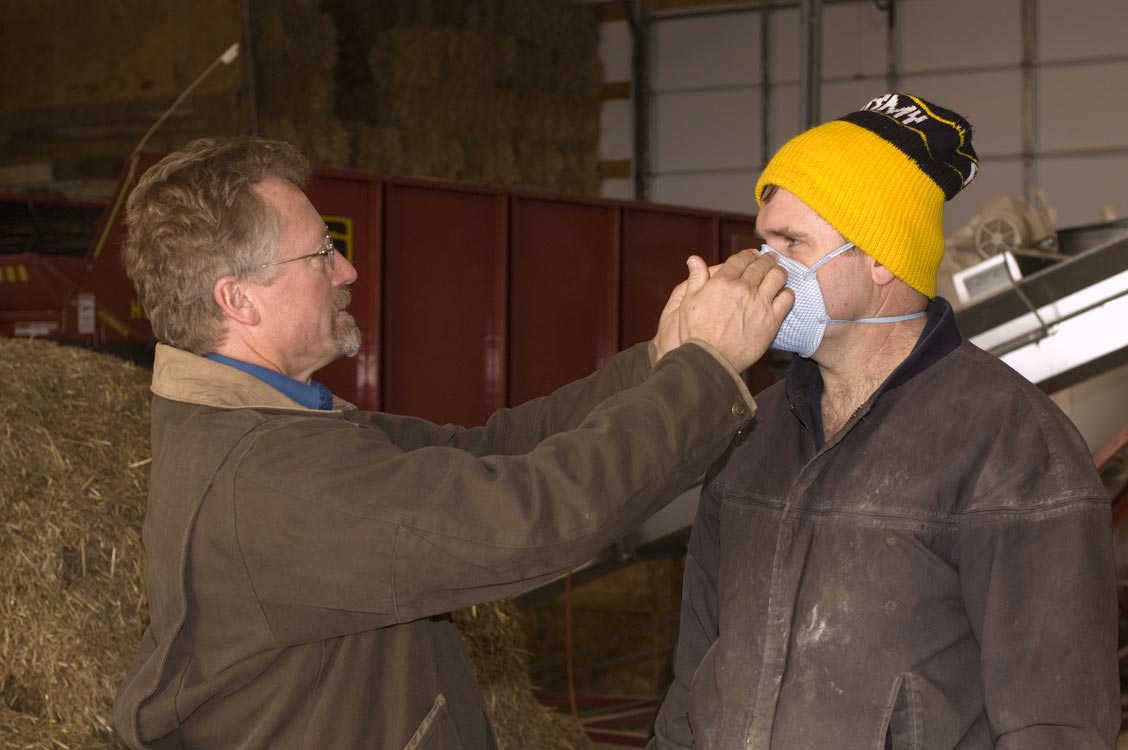
Steve Kirkhorn, M.D., M.P.H., Farm Medicine medical director 2003-2011, conducted preliminary research laying the groundwork for what has become the Wisconsin Infant Study Cohort (WISC), which found that children raised on dairy farms have stronger immune systems and fewer respiratory problems.
Medicine is another pillar of the center, which has been fortunate to have two physician medical directors with special training in occupational and environmental health: Steven Kirkhorn, M.D., (2003-2011); and Matthew Keifer, M.D., (2010-2016). Dr. Keifer still serves as editor-in-chief of the peer-reviewed Journal of Agromedicine, which Farm Medicine began editing in 2004. Dr. Kirkhorn conducted preliminary research laying the groundwork for what became the Wisconsin Infant Study Cohort (WISC), which found that children raised on dairy farms have stronger immune systems and fewer respiratory problems. Dr. Keifer and the National Farm Medicine Center helped establish the NIOSH-funded Upper Midwest Agricultural Safety and Health Center (UMASH) at the University of Minnesota. Keifer’s innovative ideas included development of a web-based tool called Farm Mapping to Assist, Protect and Prepare Emergency Responders (Farm MAPPER) enabling farmers to map hazards on their farms for the benefit of emergency responders.
The National Farm Medicine Center is successful because it changes and adapts to the needs of the agricultural community, Bendixsen said. “If we ever get boxed into one thing, we’ve probably made a mistake,” he said.
From its early days of studying Farmer’s Lung and occupational hazards, the center has transformed, adding behavioral scientists, social cultural scientists and anthropologists to the mix of more traditional researchers, Bendixsen said. Florence Becot, Ph.D., brings a sociologist’s perspective to issues of child care on farms, health insurance and farmers’ mental health. Marsha Salzwedel, Ed.D., developed the Agritourism safety guidelines that are used across North America by this growing sector of agriculture, and also leads a growing network of organizations dedicated to child agricultural safety. Andrea Swenson, Ph.D., is the first Farm Medicine scientist trained in evaluation methods, which are critical to center effectiveness and funding.
This transformation has enabled Farm Medicine to address changing agricultural work practices and worker demographics. For example, “Seguridad en las Lecherias” (Safety in Dairies) tested culturally appropriate popular education approaches to provide health and safety training to immigrant dairy workers in Wisconsin. The project drew national accolades, receiving the 2015 Stakeholder Collaboration in Occupational Injury Research Award presented by the National Safety Council. The National Farm Medicine Center, Migrant Clinicians Network and four partner organizations accepted the award. “The Seguridad project showed that for a huge problem like work-related health and safety on dairy farms, collaboration between workers, producers, researchers, and health and safety practitioners is an effective approach,” said Migrant Clinicians Network’s Amy K. Liebman, a long-time Farm Medicine collaborator.
Other examples of working with vulnerable populations include several outreach and mini-grant projects with Anabaptist farm communities, a project to translate the North American Guidelines for Children’s Agricultural Tasks into the Hmong language, a canoe safety project with Native American wild rice harvesters and qualitative research involving African American urban women farmers.
Because agriculture isn’t regulated like other industries such as mining or transportation, it’s necessary to work directly with the community rather than rely on regulators, Bendixsen said.
Partnership lasts for decades
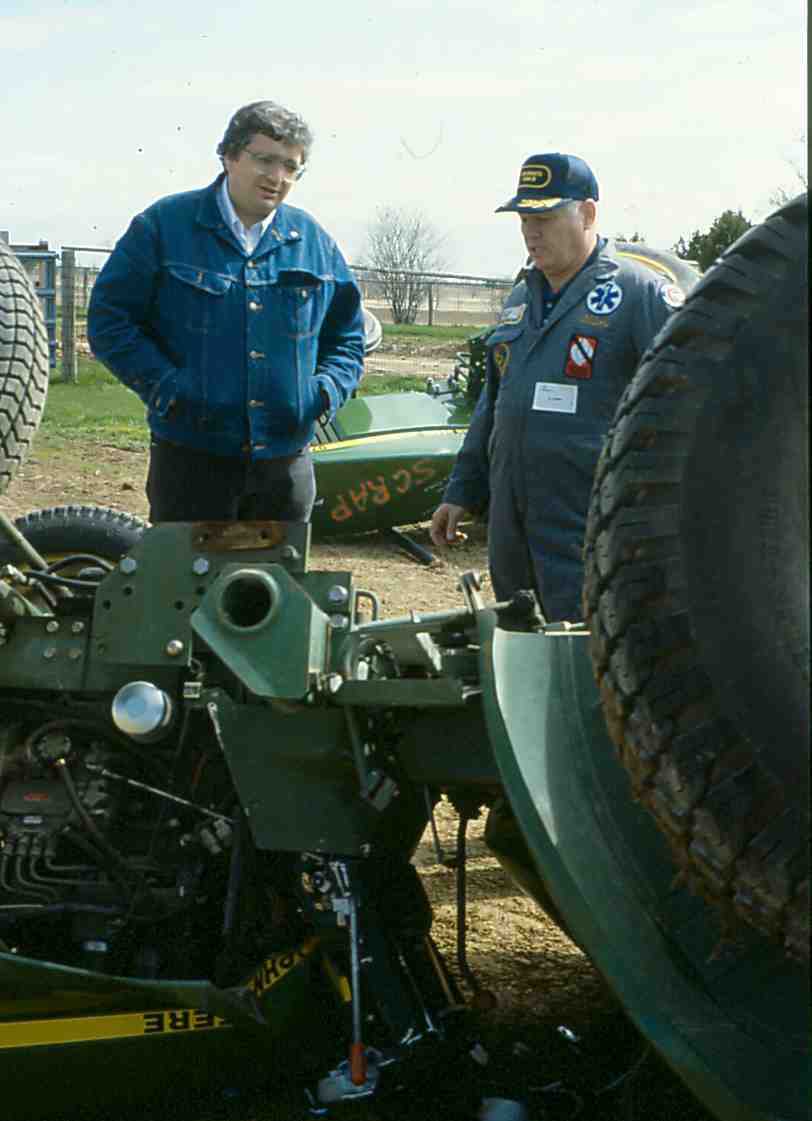
Dean Stueland, M.D., worked at Marshfield Clinic as director of the Emergency Department. Stueland was medical director of the National Farm Medicine Center.
Jerry Minor, Pittsville Fire Department chief, has worked with the center since its inception. “There was almost no education for fire and EMS personnel and basic training about how to respond to agricultural accidents,” he said. “There wasn’t a textbook. There wasn’t a class out there that taught EMS and fire: ‘Here’s all the dangers you see on a farm.’”
Thanks to Emanuel and the late Dean Stueland, M.D., another former medical director at Farm Medicine, a partnership with the National Farm Medicine Center was formed and resulted in creation of a farm injury rescue training program in Wisconsin. The present-day Agriculture Rescue Training, or ART, program teaches fire and emergency personnel how to more safely respond to an emergency on a farm. The program was revived so that a new generation of fire and EMS personnel can learn from it, said Minor, noting that fewer of today’s emergency responders grew up on farms. His goal is to train 500 firefighters in five years.
Minor was thrilled when Bendixsen came into the picture with a farming and volunteer fire department background. “That was, wow, finally somebody who knows what we do,” he said.
“The word partnership is a buzzword today,” Minor said. “The Farm Center has become a true partnership with the fire system.” He credits Pittsville’s location near Marshfield for being able to interact so closely with the center during the years. “It’s a true partnership – not just words.”
Collaborations and new projects
The National Farm Medicine Center collaborates with other agricultural centers outside Wisconsin and the Midwest region, Bendixsen said. It continues to adapt to new technologies and strategies, including the internet, virtual worlds and a new generation of farmers and their needs.
One such technology tracks agricultural injuries and publishes them to a searchable database. AgInjuryNews.org, directed by Bryan Weichelt, Ph.D., is a free web-based tool that collects and archives media reports related to agricultural injuries and fatalities across the United States and even internationally. There are no mechanisms to track all ag injuries and fatalities in the U.S., and most farms are too small to meet federal requirements for reporting. AgInjuryNews helps bridge the gap by gathering incidents deemed newsworthy.
“The value in AgInjuryNews and other media monitoring systems is really to get a little bit of detail on new injury cases that happen,” said Risto Rautiainen, Ph.D., director of the Central States Center for Agricultural Safety and Health, or CS-CASH. “AgInjuryNews couldn’t put together injury rates, but you can get some very good points for prevention. Stories are very powerful in understanding what’s going on and what’s potentially a problem that needs attention.”
Journalists, too, turn to the National Farm Medicine Center. Colleen Kottke, editor of the Wisconsin State Farmer, has used the NFMC for data when writing articles or accessing expert opinions and comments for stories. She participated in a multi-day workshop in 2004 focused on keeping children safe on farms.
“They are relevant in that they have the best up-to-date information and data available to journalists and have experts that are accessible to help disseminate that information,” Kottke said. “It is key that they are a very credible, well-respected organization.
“They are well-represented in the communities that they serve and have a genuine, tangible interest in the people in the ag industry,” she added, noting the center is a treasure trove of information.
Casper Bendixsen, Ph.D.
At 2018 Wisconsin Farm Technology Days. Dr. Bendixsen, a research scientist specializing in social-cultural anthropology, joined Farm Medicine in 2013 and became director in 2019. His own farming and ranching background has helped in bringing agricultural communities into all phases of research, with the ultimate goal of improving their health and safety.
Center’s goals for the future
Bendixsen has ambitious goals for the center.
“From a Children’s Center perspective, can we go one year without a child fatality on an American farm?” he asked. He’d like it to be a goal of the agricultural community as a whole.
“Tractor rollovers are still the No. 1 killer of farmers in this country,” he said. He’d like to see all Wisconsin tractors retrofitted with rollover protection structures (ROPS), a big goal but a very practical piece of hardware that saves lives.
Additionally, he hopes to expand the definition of agricultural health and safety to allow the center to be a leader in rural health. Marshfield Clinic wants to be the leader in rural health care, and, “Farm Medicine is an integral piece of that,” he said.
Outside of injury prevention, he wants to look at health insurance, telehealth and community health in the next five years in order to be a leader in what rural high quality health care looks like. “We’re starting to look at ag health and safety more holistically,” Bendixsen said.
Finally, Bendixsen notes that fewer physicians choose to practice in rural areas. He’d like to see that change. “We need Dean Emanuels and Matt Keifers,” he said. “We need medical doctors who want to dedicate time and effort to rural communities and farm communities,” he said. “That gap is going to be wider before it becomes narrower.
“What medical experts and researchers do is live in and connect with their communities. We have the advantage of place,” he said. “By becoming part of the community, we open up doors, instead of parachute in for a few days or week and then leaving.”
Farm producers make up 2 percent of the population. “How do you justify all of this effort for 2 percent?”, Bendixsen asked. “Well, the 2 percent feeds the country, and arguably feeds the world.”
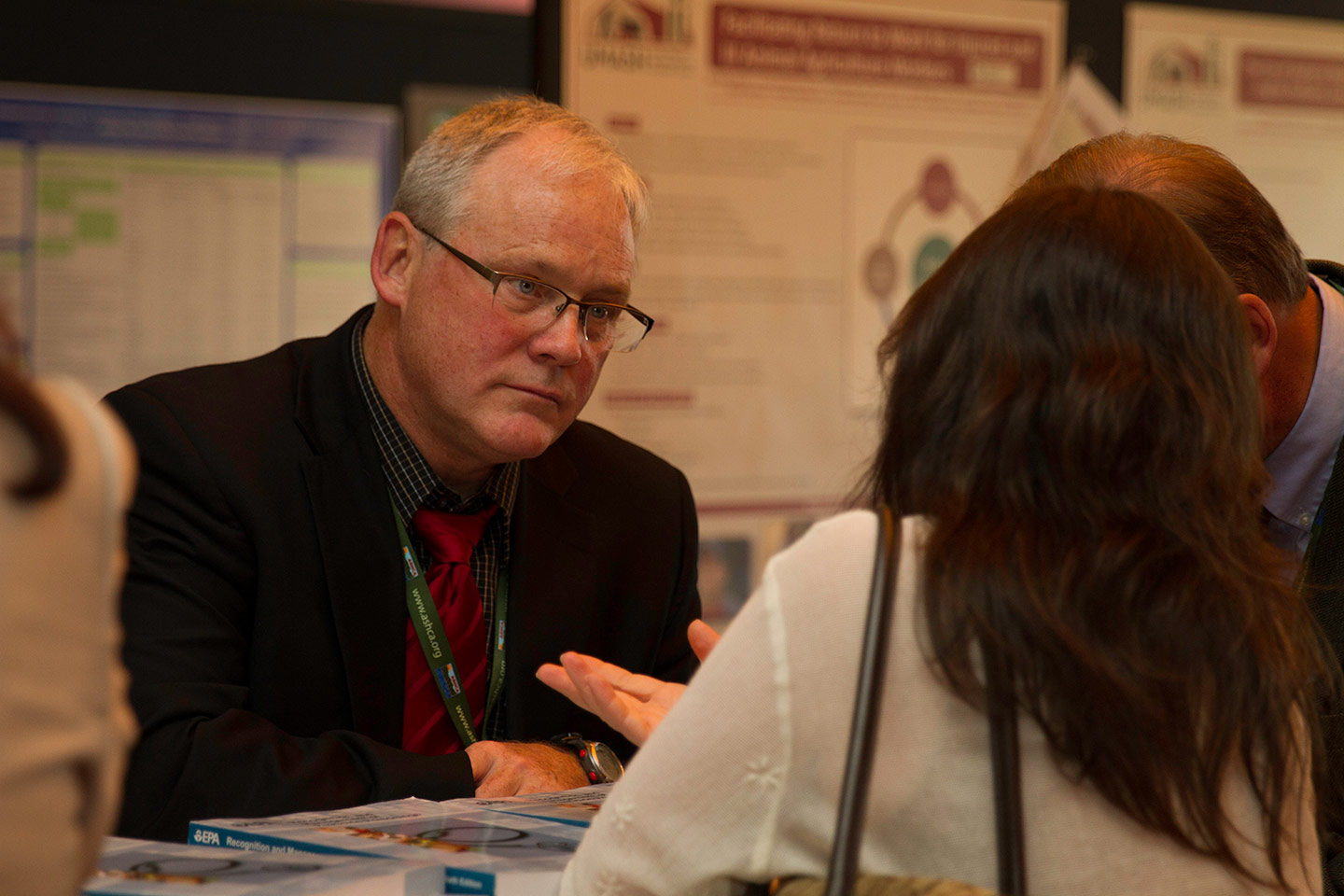
Matthew Keifer, M.D., M.P.H.
Director of the National Farm Medicine Center 2010-2016, facilitated Farm Medicine’s role in establishing the Upper Midwest Agricultural Safety and Health Center. Keifer’s innovative ideas include development of a web-based tool called Farm Mapping to Assist, Protect and Prepare Emergency Responders (Farm MAPPER), enabling farmers to map hazards on their farms for the benefit of emergency responders.
Health issues unique to farmers, their families and employees provided the impetus for establishment of the National Farm Medicine Center in 1981. A group of physicians and other professional staff of Marshfield Clinic began discussing the establishment of an agricultural medicine center that would focus on health issues unique to farmers and their families who made up a large segment of the population in central Wisconsin, and who were also patients of Marshfield Clinic. This concept was a natural extension of the ongoing research and clinical expertise at Marshfield Clinic, starting with the Clinic’s acquisition of Dean Emanuel, M.D., a cardiologist who joined the staff in 1958. Dr. Emanuel had a deep interest in respiratory illnesses and Farmer’s Lung disease and embarked on a series of research projects and investigations of unique maladies occurring in dairy farmers. The rest, as they say, is history
1959: First federal grant awarded to Marshfield Clinic from National Institutes for Health (NIH) to study Farmer’s Lung disease.
1960s: Continuation of work on Farmer’s Lung disease and expansion of research into new areas including Organic Dust Toxic Syndrome and Maple Bark disease.
1979: Task Force formed to review agriculture-related medical problems as seen by Clinic physicians, leading to formal recommendations in a Feasibility Study.
1981: National Farm Medicine Center formed as a program of the Medical Research Foundation.
1981: Agricultural Rescue Training programs initiated.
1982: National Farm Medicine Center given start-up funds from Marshfield Clinic and formally announced to community and media.
1982: First Auction of Champions generates $11,000 for the work of Farm Medicine.
1983: Began health screenings at annual Wisconsin Farm Progress Days.
1983: A television education program featuring 22 health topics was developed and distributed to national TV networks.
1984: AgriHealth, 5-part video education curriculum, was developed and disseminated nationally to high school agriculture teachers.
1985: Today’s Farm Health radio series is broadcast by more than 200 radio networks nationwide.
1986: Awarded NIH grant for Marshfield’s Specialized Center of Research (SCOR) to study pulmonary response to organic dust exposures.
1987: Emergency Room-based farm injury surveillance and noise exposure in agriculture pilot study initiated.
1987: Received National Institute for Occupational Safety and Health (NIOSH) contracts to develop data collection tools for farm injuries and farm chemical exposure.
1988: The Country Doctor medical advice column is featured in monthly farm magazines.
1988: NFMC’s first environmental health project is funded by Amoco Corporation to address leaking underground fuel storage on farms.
1989: Received funding from NIOSH for comprehensive, population-based farm injury surveillance.
1989: Hosted the “Midwest Conference for Farmers with Disabilities” in Stevens Point, WI.
1990: Awarded NIOSH grant for Wisconsin Farmers Cancer Control Program.
1991: Designated a NIOSH Center for Agricultural Disease and Injury Research, Education, and Prevention, involving many projects and external collaborations.
1991: Farmers Caps and Hats research leads to national media coverage for Marshfield Clinic.
1992: Named one of 10 Prostate, Lung, Colorectal and Ovarian Cancer Screening Centers funded by National Cancer Institute (NCI).
1992: Convened a National Childhood Agricultural Injury Prevention Symposium in Marshfield, WI.
1992: Funded by Federal Maternal and Child Health Bureau as a Children’s Safety Network-Rural Center.
1993: Released “A Guide to Tractor Roll Bars and Other Rollover Protective Structures.”
1993: Environmental Health Laboratory established, with research emphasis on pathogen virulence and infectious disease.
1994: Received funding from NIOSH for Upper Midwest Health Study.
1995: Hosted the “Midwest Seminar for Health Care Providers: Common Rural and Agricultural Health Problems” in Madison, WI.
1996: Led a national committee that developed the “National Action Plan for Childhood Agricultural Injury Prevention”, adopted and funded by the U.S. Congress.
1997: Designated by NIOSH as National Children’s Center for Rural and Agricultural Health and Safety, involving multiple projects and external collaborations.
1997: Reproductive Toxicology Lab established, with emphasis on determining adverse effects of agricultural chemical exposures on human reproduction.
1998: Received NIOSH grant to study children’s agricultural work guidelines for relevance, applicability and effectiveness.
1999: Released North American Guidelines for Children’s Agricultural Tasks (NAGCAT).
1999: Received funding from NCI for research on the molecular epidemiology of prostate carcinogenesis.
2000: Led the National Adolescent Farmworker Occupational Health and Safety Advisory Committee and published its recommendations in 2001.
2000: Awarded a NIOSH grant to assess potential injury prevention impact of NAGCAT using a case series design.
2000: Childhood Agricultural Safety Network (CASN) established by National Children’s Center.
2001: Hosted the National Summit on Childhood Agricultural Injury Prevention and published results a year later.
2001: “Migrant and Seasonal Hired Adolescent Farmworkers: A Plan to Improve Working Conditions,” published.
2002: Funded by NIOSH to study whether a modification of federal child labor laws could reduce injuries to children on family farms.
2003: Published “Creating Safe Play Areas on Farms,” the first comprehensive guidelines for designing and building a play area in a farm setting
2003: Awarded STAR grant from the U.S. Environmental Protection Agency (EPA) to estimate the burden of acute childhood illnesses attributable to drinking water.
2004: Released “Benchmarking Report: Hiring and Safety Practices for Adolescent Workers in Agriculture.”
2004: Convened first national Journalists Workshop to expand and enhance media reporting of agricultural health and safety issues.
2004: Assumed editorship of the Journal of Agromedicine, a quarterly, peer-reviewed journal indexed by the National Library of Medicine.
2006: Hosted the National Institute for Farm Safety annual conference in Sheboygan, WI.
2006: National public awareness campaign “Keep Kids Away from Tractors” launched.
2007: Facilitated establishment of industry-driven Agricultural Safety and Health Council of America (ASHCA).
2007: “Agritourism: Health and Safety Guidelines for Children” published.
2008: “Safety Guidelines for Hired Adolescent Farm Workers (SaGHAF)” released.
2010: Dean Emanuel Endowed Chair position filled; Wisconsin Dairy Workers Safety and Health Initiative launched.
2011: Co-founded NIOSH-funded Upper Midwest Agricultual Safety and Health (UMASH) Center in collaboration with University of Minnesota School of Public Health and College of Veterinary Medicine, Minnesota Department of Health, and Migrant Clinicians Network.
2011: Partnered with Marshfield Clinic Dermatology to screen 500 people for skin cancer at Wisconsin Farm Technology Days, Marshfield.
2012: Published “Blueprint for Protecting Children in Agriculture: The 2012 National Action Plan.”
2012: Released interactive Web guide, “Integrating Safety into Agritourism,” based upon 2007 publication, “Agritourism Health and Safety Guidelines for Children.”
2013: Farm MAPPER (Farm Mapping to Assist, Protect and Prepare Emergency Responders), which uses QR codes to provide onsite hazard information to emergency responders, goes live.
2013: Wisconsin Infant Study Cohort (WISC) project, a collaboration with University of Wisconsin involving the only rural birth cohort in the nation, completes pilot phase.
2013: Wisconsin Rollover Protection Structure (ROPS) Rebate Program established with donor support.
2013: “Parent First, Farmer Second” media campaign wins awards for radio, print ads directing farm parents to www.cultivatesafety.org
2013: Worked with ASHCA to host first North American Agricultural Safety Summit, Minneapolis.
2014: Partnered with Marshfield Clinic Dermatology to screen more than 600 people for skin cancer at Wisconsin Farm Technology Days, Stevens Point.
2015: UMASH Seguridad en las Lecherias: Immigrant Dairy Worker Health and Safety project wins award from National Safety Council for Stakeholder Collaboration in Occupational Injury Research.
2015: AgInjuryNews.org, an interactive online tool built with publicly-available child ag injury news reports, goes live.
2015: “We’re All In!”, summarizing the mutual benefits of employers providing child care services for workers, published by National Children’s Center.
2015: Safety in Agriculture for Youth (SAY) national clearinghouse ensures public access to evidence-based safety and health curriculums.
2016: Safer Farm, a mobile-friendly tool for assessing and mitigating farm hazards, goes live.
2017: Agricultural Youth Work Guidelines – updated, interactive and based on the North American Guidelines for Children’s Agricultural Tasks – are published.
2017: A published microbiome study involving farmers and non-farmers provides foundation for research into the farm-as-medicine concept.
2018: Hosted first in a series of national Childhood Agricultural Injury Prevention Workshops.
2018: Partnered with Marshfield Clinic Dermatology to screen more than 600 people for skin cancer at Wisconsin Farm Technology Days, Marshfield.
2019: Utilized Auction of Champions’ donor support to implement mental Health First Aird trainings in central Wisconsin farm communities.
2019: Dairy Microbiome (DOME) study researches the effect dairy cows have on the microbiome and health of individuals who works on dairy farms.
2019: Wisconsin Infant Study Cohort (WISC) study population incorporated into the national Environmental Influences on Child Health Outcomes, or ECHO, project to better understand the environment’s impact on child health outcomes in rural areas.
2019: “Roadmap for Delivering Child Care in Agricultural Communities” published.
2019: Rural Firefighters Delivering Agricultural Safety and Health (RF-DASH) conducts first national workshop.
2020: Wisconsin Farm Related Fatalities Report re-started with data from Ag Injury News, and in collaboration with UW-Madison Division of Extension, UW College of Agriculture and Life Sciences and Wisconsin Department of Health.
2020: The National Institute for Occupational Safety and Health (NIOSH) awards the National Children’s Center a fifth consecutive competitive grant to continue the center’s mission of childhood agricultural injury prevention.
2020: Journal of Agromedicine issue dedicated to COVID-19’s effect on agricultural safety and health receives high readership and citation numbers, helping boost journal’s Impact Factor to highest-ever 1.675.
2021: Agricultural Rescue Training program restarted with Auction of Champions support.

